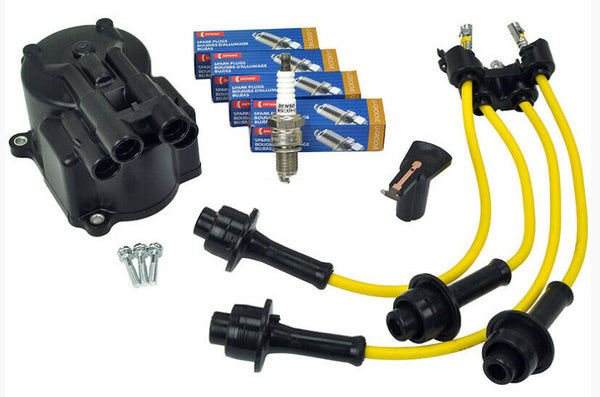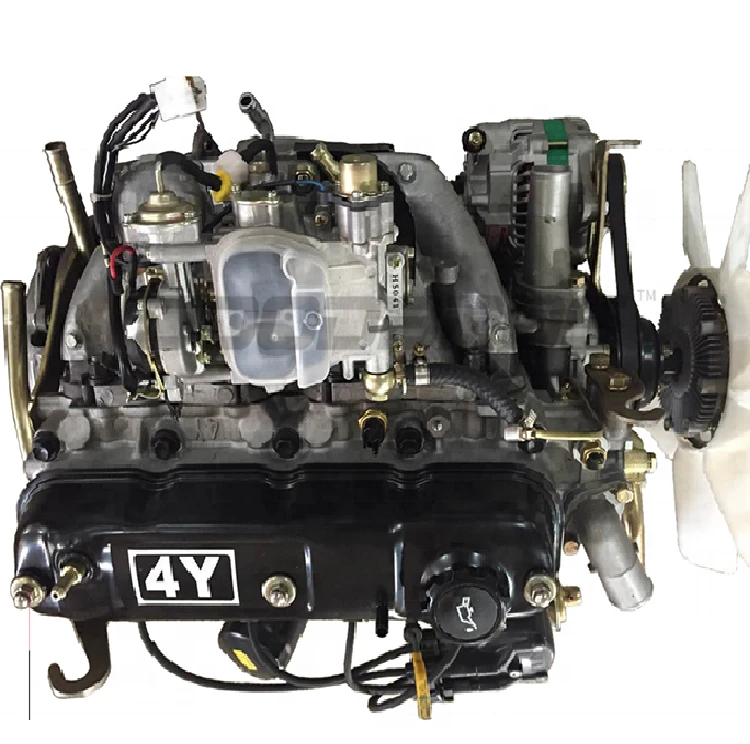The Advantages of Choosing a Vehicle Powered by the 4Y Engine
The Advantages of Choosing a Vehicle Powered by the 4Y Engine
Blog Article
Why the Engine Is the very best Option for Performance and Effectiveness in Your Auto
The engine stays a critical part in automotive style, mainly due to its considerable influence on both efficiency and effectiveness. As developments in technology make it possible for smaller engines to provide remarkable power while maximizing gas economy, the assimilation of functions such as turbocharging and hybrid systems comes to be increasingly vital.
Comprehending Engine Types
Understanding the different sorts of engines is important for maximizing performance and effectiveness in auto design. The primary engine types include internal combustion engines (ICE), electric engines, and crossbreed systems, each offering unique benefits and constraints.
Inner burning engines, which can be additional classified right into gas and diesel variations, count on the combustion of fuel to create power. Fuel engines commonly give greater RPMs and better acceleration, while diesel engines are understood for their torque and gas efficiency, making them suitable for durable applications.
Electric engines, on the various other hand, use electrical motors powered by batteries or fuel cells. They use rapid torque distribution, leading to smooth acceleration and lower emissions. The efficiency of electric engines is substantially higher than that of ICEs, making them a popular selection for eco-conscious customers.
Crossbreed systems integrate both inner burning and electrical engines, leveraging the staminas of both technologies. They optimize fuel intake by utilizing electric power at reduced speeds and changing to gasoline or diesel for higher speeds or heavier lots.
Choosing the best engine kind is necessary for achieving wanted performance metrics and ecological sustainability in contemporary auto design.
The Impact of Engine Dimension
Engine dimension frequently plays an essential role in identifying an auto's performance and efficiency. Normally determined in litres or cubic centimeters, engine dimension straight affects the power outcome and torque characteristics of an automobile. Larger engines typically create even more horsepower, making it possible for greater velocity and higher full throttle. This is specifically advantageous in applications requiring robust performance, such as sports autos and heavy-duty vehicles.
Nonetheless, increased engine dimension commonly correlates with lessened fuel effectiveness. Larger engines eat more gas, resulting in higher emissions and functional costs. Producers need to stabilize the need for power with the need for fuel economic climate. Smaller sized engines can supply sufficient performance for daily driving while advertising far better effectiveness, making them a prominent choice in mid-size and small vehicles.
Furthermore, innovations in engine layout, such as turbocharging and direct fuel injection, permit smaller sized engines to accomplish power levels similar to their larger counterparts. This pattern stresses the relevance of not only concentrating on engine size yet also considering general lorry design and technology (4y engine). Eventually, the effect of engine size on performance and effectiveness highlights the demand for consumers to analyze their specific driving preferences and demands when selecting a lorry
Advanced Engine Technologies
Advancements in engine modern technologies have substantially improved the landscape of vehicle performance and efficiency, building upon the fundamental principles established by engine size. Significantly, improvements such as turbocharging and straight fuel shot have enabled smaller sized engines to supply power degrees previously related to larger counterparts. Turbochargers compress air getting in the engine, permitting enhanced power outcome without a matching increase in engine size, while direct shot optimizes fuel shipment, enhancing combustion effectiveness.
In addition, variable shutoff timing systems have actually become my company an essential modern technology, allowing engines to adjust shutoff procedure based upon driving problems. This versatility improves both efficiency throughout velocity and fuel efficiency throughout cruising. Crossbreed and electrical engine innovations even more highlight the change in automobile layout, combining standard interior burning engines with electrical motors to make best use of effectiveness while minimizing emissions.
Furthermore, improvements in products science have brought about lighter, extra resilient engine elements, additionally improving efficiency and longevity. The go to the website integration of innovative electronic devices and engine control systems also allows for real-time modifications, making sure ideal efficiency throughout various problems. Jointly, these advanced engine innovations not only boost automobile performance yet likewise add to a much more sustainable auto future, showing the recurring advancement of engine style.
Balancing Power and Effectiveness
Striking a balance in between power and effectiveness is vital in modern vehicle style as makers seek to meet progressively stringent exhausts laws while pleasing customer need for performance (4y engine). The difficulty hinges on enhancing engine qualities to supply durable power outcome without compromising fuel economic climate
To attain this balance, designers use numerous strategies, such as turbocharging, which enhances engine power by compeling in more air, permitting for a smaller sized engine displacement that enhances gas effectiveness. Variable valve timing innovations also play a significant role, allowing engines to change their efficiency characteristics based on driving problems, therefore enhancing both power and efficiency.
Moreover, advancements in products and producing strategies have led to lighter engine parts, which minimize total automobile weight and improve gas efficiency without compromising power. Hybrid innovations have additionally emerged as a practical service, integrating traditional interior burning engines with electric powertrains to provide an increase in efficiency while maintaining lower discharges.

Future Trends in Engine Layout

Moreover, the advancement of sophisticated products, such as high-strength alloys and light-weight compounds, is readied to reinvent engine parts. These products not only reduce weight however likewise enhance thermal performance, thereby maximizing performance. In addition, manufacturers are discovering variable compression ratios, allowing engines to adapt to different driving conditions, enhancing both power result and fuel economic climate.
Additionally, the rise of expert system and equipment learning in engine style is making it possible for predictive maintenance and real-time performance optimization. This next modern technology can lead to engines that self-adjust for optimal performance based upon driving patterns.

Conclusion
To conclude, the engine acts as a crucial component in attaining optimum performance and efficiency in modern-day lorries. Advanced innovations, such as turbocharging and hybrid systems, boost power outcome while reducing fuel consumption and exhausts. The interaction between engine dimension and design proceeds to develop, driving developments that stabilize thrilling performance with ecological sustainability. As automotive design progresses, the emphasis on developing reliable, powerful engines will certainly remain critical fit the future of transport.
Furthermore, advancements in engine layout, such as turbocharging and straight fuel shot, permit smaller engines to achieve power levels comparable to their larger counterparts.Developments in engine innovations have actually dramatically improved the landscape of vehicle efficiency and performance, building upon the foundational concepts developed by engine dimension. Turbochargers compress air going into the engine, allowing for enhanced power output without a corresponding increase in engine dimension, while direct injection maximizes fuel shipment, enhancing burning efficiency.
Hybrid and electrical engine innovations even more illustrate the change in auto design, integrating traditional inner combustion engines with electric motors to make the most of effectiveness while lowering discharges.
Jointly, these advanced engine innovations not only improve automobile performance but also contribute to a more sustainable automotive future, demonstrating the ongoing advancement of engine design. (4y engine)
Report this page